About us
Who are we ?
Michele et Patrice
Together, this husband and wife team created the estate in 1990, at a time when Patrice was still in charge of his family’s domaine (Daniel Rion). He built his own winery in 2000 and created his negociant business, SARL Patrice Rion.
Patrice’s reputation was launched in the early 1980s, when he vastly increased the presence of his family domaine on the international market. Research and innovation, both in winemaking and farming – use of screwcaps, farming to increase leaf surface area -- gave him a reputation as an innovator.
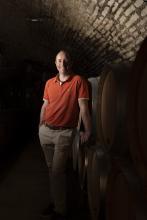 Maxime
Maxime
Son Maxime joined Patrice and Michele in 2005 after completing oenology studies in Dijon. He apprenticed with a number of well-known winemakers in different regions, such as Nadine Gublin in Meursault (FR), Hubert de Bouard in Saint Emilion (FR),and Dr Neil McCalum in Martinborough (NZ). That said, his father's guidance and experience are always welcome...
Our vineyard
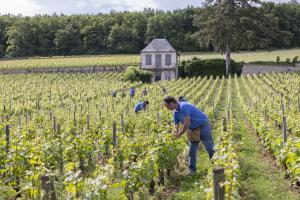 Our approach to viticulture is rigorous. The vines are pruned short and bud selection is very strict. Leaf-canopy surface is optimized for greater photosynthetic activity, yields are limited, and disease and pest control is carefully managed. All this allows us to farm naturally, as we move to certified organic.
Our approach to viticulture is rigorous. The vines are pruned short and bud selection is very strict. Leaf-canopy surface is optimized for greater photosynthetic activity, yields are limited, and disease and pest control is carefully managed. All this allows us to farm naturally, as we move to certified organic.
With our soils, we do not use weedkillers, preferring the plow (and sometimes the hoe!) to control weeds. But as excessive plowing can be bad for the soil and the vine, during the winter we sow a natural grass which helps to avoid erosion, and encourages soil fauna.
Our know how
The harvest
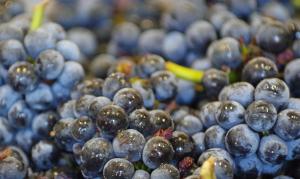
Choosing the picking date is never easy. It usually takes place around 90 days after flowering, and we test the berries during the last days before harvest with lab analyses and frequent tasting. We study the skin, the seeds, and the juice. We want to pick before the fruit becomes overripe, as we prefer to keep the freshness and the aromatic typicity of Burgundian pinot noir.
On the practical side, we pick into small, 18-kilogram baskets in order to preserve the integrity of the fruit during transport to the winery. A quick sorting of the unripe grapes is done in the vineyard by the pickers, but we want very clean material at this early point in the process, so we sort rigorously at the winery with several people (depending on the year) to be sure that only the healthy berries will be retained.
Winemaking
Winemaking starts when the grape baskets arrive at the winery. The sorting is the most important part of the winemakng. Once it's well done, winemaking is easy! Four to eight people are in the sorting room, on two different sorting tables for a perfect result. 70 to 100% of the grapes are destemmed, then we fill the fermenting tanks by gravity. We cool down the juice for a few days, and once fermentation starts the tanks gradually heat up. The overall maceration takes between 18 and 21 days.
The same work, with the same care, is done for each appellation whatever the level. Tasting the juice/wine is the only way to choose when to end the maceration, and prepare to press. Through this continual tasting process, the differences among the terroirs can be tracked and optimised.
Ageing
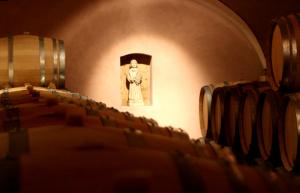
We like to age our wines on the "reductive side," meaning little contact with oxygen. This protects them against oxidation and helps preserve the fruit and freshness.
We do not rack the wines. Ageing takes place on the fine lees for 15 to 18 months, in oak barrels, with about 40% new oak being used for the village and premier crus. Before bottling, the wines spend a month or two in a stainless-steel tank to perfectly homogenize the cuvée.
Bottling
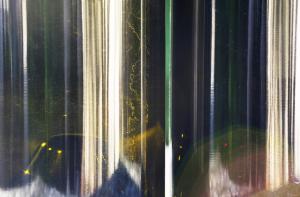 This is one of the most important steps in the wine's life...the last before you'll enjoy it! Hygiene is essential, and our new equipment helps us with this aspect. We can also offer you a different type of closure, with the Stelvin screwcap for appellations like Bourgogne Chardonnay and Bourgogne Pinot Noir.
This is one of the most important steps in the wine's life...the last before you'll enjoy it! Hygiene is essential, and our new equipment helps us with this aspect. We can also offer you a different type of closure, with the Stelvin screwcap for appellations like Bourgogne Chardonnay and Bourgogne Pinot Noir.
Our choice of bottle is designed to give sufficient head space, thus avoiding the risk of leaks.
Our style
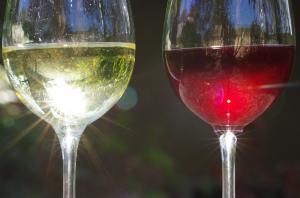 We aim above all to produce balanced wines, and do not believe that the “maximum” is the “optimum,” particularly when it comes to extracting phenolics, tannins, color...
We aim above all to produce balanced wines, and do not believe that the “maximum” is the “optimum,” particularly when it comes to extracting phenolics, tannins, color...
We like clear, precise, and complex wines, with good fruit. Some vintages are best with food, some for tasting, but each wine has its own characteristics.
It’s important to maintain the freshness and minerality of Burgundian Pinot, and for us, harmony in the mouth – with silky, round tannins -- is the best quality that a wine can have.

